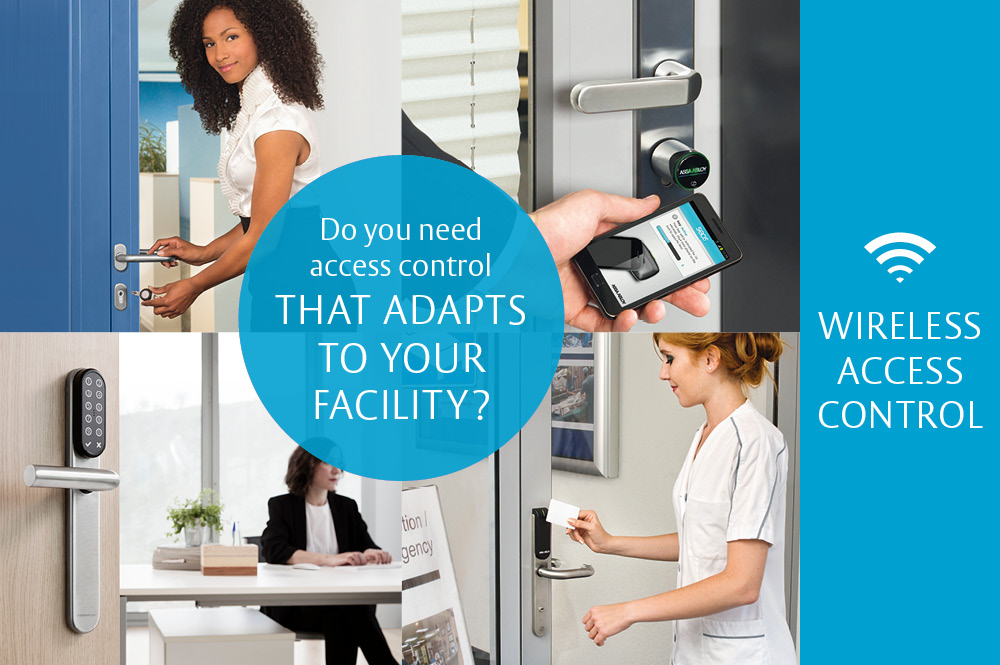ISJ Exclusive: What’s happening in access control?


James Thorpe
Share this content
Thomas Schulz, EMEA Marketing & Communications Director, ASSA ABLOY EMEA shares his insights on the present and future of access control.
From vacuum cleaners to smartphone chargers, the world is cutting wires in the name of convenience. Access control is no different: ever more organisations switch to wireless access control to secure premises. In ASSA ABLOY’s most recent biennial survey of security professionals, the share of respondents with a fully-hardwired access system fell below 50% for the first time. Wireless solutions with secure, battery-powered locks are growing fast. A third of respondents already deploy a mix of wired and wireless locks; almost half admit plans to install wireless locking.
Survey data from the report also detects fast-growing trust around the technology. Nearly two thirds (63%) of respondents “have a more positive view of wireless than five years ago because the technology has improved.”
Battery-powered wireless devices offer flexibility without sacrificing security. With integrated RFID readers, they are easy to retrofit to existing doors, giving security managers more control over premises. Where once you may have only secured a building’s main entrance or perimeter, now you also secure internal doors to limit access to specific teams or staff with higher authority. Wireless locks are ideal for this. When you extend access control wirelessly to more doors, compliance requirements for audit trails are easily met.
“Any situation when it is undesirable or too expensive to cut into a door leads to a preference for wireless locking solutions,” writes Jim Dearing, Senior Analyst for Security and Building Technologies at IHS Markit, in ASSA ABLOY’s most recent Wireless Access Control Report. “These locks have fewer components plus they can be installed at any stage during construction, meaning they are a better fit for retrofit projects.” At the Casa de la Misericordia residential care home in Pamplona, Spain, SMARTair wireless access control easily enabled real-time access control for a building dating to the 1930s.
Swapping mechanical locks for electronic access control upgrades a door’s security significantly. It’s straightforward to extend an existing third-party access system by switching mechanical locking cylinders for battery-powered, wireless Aperio devices. You bring them into your control panel via communications hubs (online), update-on-card or offline. A CLIQ key-based system combines wireless, battery-powered security with mechatronic locking. Wireless doesn’t tie you down.

Integration: one control panel, multiple functions
In the 2016 edition of ASSA ABLOY’s access control report, Blake Kozak at IHS Research writes: “Wireless locks are often specially designed for integration with other systems. The integration capabilities and ease of use can be a significant benefit.” Security professionals — both from survey data and anecdotally — concur. Integrating multiple security functions within a single environment or control panel offers administration advantages. The “smart building” requires all building management technologies working together, including access control.
In the most recent ASSA ABLOY survey, almost all respondents agree having access control integrated across the building is important — with 69% assessing it “very important”. Nine in ten respondents agree it’s become even more important in the last five years. “Integration and single seat management is where security systems in general will fit within the growing smart buildings brief the industry is getting,” notes one respondent.
Interoperability of technologies also ends reliance on a single, proprietary solution. This can be a critically important factor when you are investing in new or upgraded access control. You can bring in a new building, for example, by installing the best locks for the job, not merely whatever your legacy system offers.
ASSA ABLOY wireless lock technology, Aperio is built for seamless integration. Aperio wireless cylinders, handles, escutcheons, security locks and server rack locks work with security systems from more than 100 different providers — within Gallagher and xPLAN systems at the Hyatt Regency Dubai; as part of Pacom’s Unison security management platform at Lund University in Sweden. At Ghent’s Hospital Maria Middelares, Nedap’s AEOS platform integrated with Aperio wireless locks protects staff, visitors, patients, medicines, and confidential data. AEOS controls every door, credential and user from a single interface — which saves facility managers time and money. There are many more examples of fully integrated Aperio deployments, all over Europe in buildings of almost every type.
Key-based wireless access control system CLIQ also offers opportunities to integrate across building management functions. CLIQ Web Manager has the flexibility to integrate with existing access control and other customer software. Its architecture supports multiple administrators or sites, across different time zones if required.
Locks affect your energy efficiency
There is growing appreciation of how your lock choice can impact an organisation’s overall power consumption, energy efficiency and ultimately sustainability. The magnets in a standard wired lock operate via mains electricity. Most wireless locks are powered by an off-the-shelf battery which — in the case of the new SMARTair Knob Cylinder, for example — only needs changing once every 60,000 cycles.
The magnitude of the impact on energy use may surprise you. One ASSA ABLOY whitepaper examined power costings from a project calculation — to fit 1,200 doors to student accommodation in Germany. The annual energy saving from installing Aperio wireless cylinders, rather than comparable wired access control, was estimated at over €15,000.
ASSA ABLOY has a growing menu of solutions built with energy efficiency in mind. With CLIQ Connect programmable key access control, a mobile worker no longer needs to update their access rights by returning to base. They don’t need to locate or carry a programming device. All they need is a smartphone, the CLIQ Connect app and a secure Bluetooth connection to update their key’s access rights on the move. It’s simple, cost-saving and popular with major utilities including ZeFil, a fibre network provider in Toulouse, France.
PULSE is a new wireless, key-based access control technology available in Finland (and soon more widely). PULSE offers electronic access control via self-powered cylinders, padlocks and electronic keys, with no external power supply and no batteries. The power generated by inserting and turning a PULSE key powers the lock’s encrypted electronic access control features.
Three-quarters of ASSA ABLOY survey respondents agree energy efficiency has become more important in the past five years. Self-powered technologies like PULSE offer an exciting glimpse of access control’s future.
ASSA ABLOY’s 22-page “Wireless Access Control Report” is free to download at https://campaigns.assaabloyopeningsolutions.eu/wacreport2018
This article was originally published in the October edition of International Security Journal. Read your FREE digital copy on the link here



